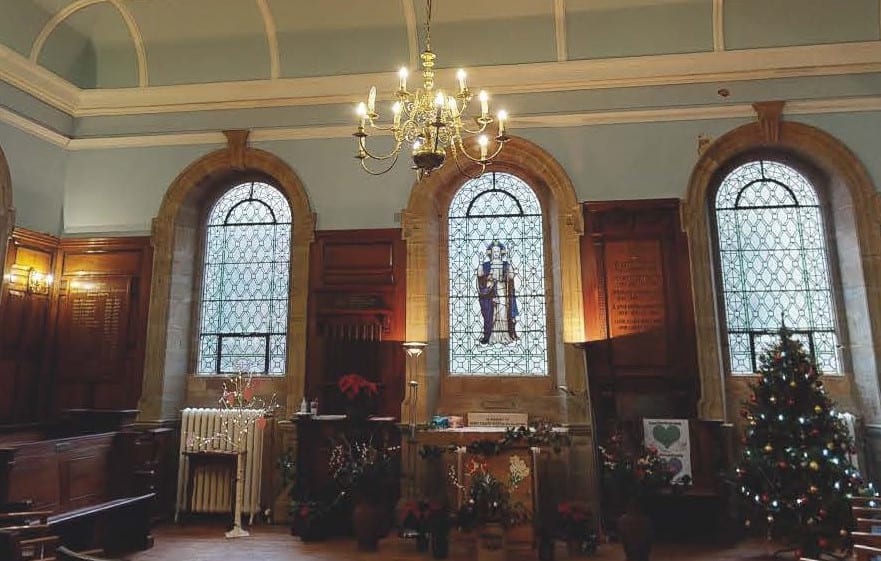Relocating a Victorian chapel from its current position in a hospital building due for demolition to its position in a new building would be tough enough, but with 50mm tolerances making the challenge tougher, contractor DBR turned to technology.
Client: Brighton and Sussex University Hospitals NHS Trust
Chapel project contractor: DBR (London)
Main contractor: Laing O’Rourke
Conservation architect: Cowan Architects
Conservation engineer: SFK Consulting
Principal architect: BDP
BIM specialist: Murphy Geospatial
Brighton’s Royal Sussex County Hospital is undergoing significant changes and improvement through the ‘3Ts Redevelopment’ programme. The construction programme, under main contractor Laing O’Rourke, will replace the front half of the hospital, including the oldest acute ward block in the NHS, with two new state-of-the-art clinical facilities. The two new buildings were designed by principal architect, BDP, and will provide accommodation for more than 40 wards and departments. The framework and outer envelope of the first building is complete, and its internal fit-out is underway.
As part of the work, a 200sq m Victorian chapel from the first floor of one of the to-be-demolished Barry Building had to be relocated within the new hospital complex, at a cost of around £1m.
DBR (London), a conservation specialist responsible for the restoration of some of the country’s most famous historic sites including the Palace of Westminster and Buckingham Palace, won the contract to move the chapel.
There is an important heritage work-stream in the project, with Brighton and Sussex University Hospitals NHS Trust committed to saving many original features and celebrating the hospital’s fascinating past – hence their determination to preserve the much-loved chapel.

We will be placing the chapel in a concrete box in its new location, and are working with a 50mm tolerance. For us, BIM technology is vital in ensuring the move goes smoothly.– Adrian Attwood, DBR
Reliance on point cloud imaging for accuracy
Moving a Victorian chapel is a first for DBR, according to executive director Adrian Attwood: “It’s pretty rare to be moving a complete chapel into a restrained space. It’s a wonderful but challenging project.”
Using point cloud imaging technology allowed DBR to overlay different spaces in three dimensions, to ensure optimal fit and to identify pinch points. Andrew Hope, project leader at Laing O’Rourke, noted: “The Laing O’Rourke project team have fully supported this approach and are working collaboratively with both DBR and the NHS for a successful transition of the historic fabric.”
DBR is using Autodesk Revit, laser scanning and photographic tools to create the digital models the team is reliant on. “It’s been a superb tool – without it we would have struggled,” Attwood said. “Effectively, we will be placing the chapel in a concrete box in its new location [see main image], and are working with a 50mm tolerance. For us, BIM technology is vital in ensuring the move goes smoothly. Any errors on sizing would mean having to cut into reinforced concrete slabs in the new site, so it’s essential to get an exact fit.”
Critical information is accessed via Autodesk BIM 360 on a shared platform, helping the team to review the project remotely. “We’ve been able to resolve coordination issues faster,” said Attwood. “The Revit system is particularly good for automated tasks and easily making localised adjustments that automatically update the 2D data.”
Rising to the challenge of moving an historic building
The chapel is roughly 20m by 10m by 10m in height, although its dimensions are anything but flush. Bumps, bows, and crevices caused by the ravages of time could present major issues on a relocation like this. With a digitised version of the space, DBR’s team of conservationists can iron out any problems ahead of the actual move.
A laser survey quickly captures accurate 3D data about the existing buildings on site. “We can then work with the 3D point cloud data file,” explains Attwood. “It’s possible to catalogue all the individual units and design elements of this beautiful church – everything from flooring, to ceiling mouldings, to stained glass windows.”

The 200sq m Victorian chapel
Collaborative working with ease
He says the BIM software has helped enormously because it means DBR’s technicians and craftspeople can work on the project virtually and collaboratively, without needing to re-visit the site to check dimensions of the chapel’s unique features. The BIM model also enables the conservation architect, Cowan Associates, and the conservation engineer SFK to confidently design the new supporting structure with the available void space and without compromising the internal dimensions of the chapel.
DBR can flow accurate data into the BIM model that is the template for the wider 3Ts project, confirms Attwood. Data is also being used to enable DBR to catalogue a host of heritage assets being transferred from the old to the new location. This programme involves capturing the condition of every item from pews to chandeliers, and carefully cataloguing the individual units.
Making intolerances tolerable
There are often misalignments and intolerances when dealing with renovating or moving heritage buildings. However, the DBR team feels BIM is allowing obstacles to be overcome well ahead of the chapel move, so the risk of delay through inaccuracies is greatly reduced.
The BIM model has identified two major pinch points where the historic fabric would have been compromised by the concrete host box structural frame. This early detection allowed DBR to make fine positioning adjustments in the BIM model, some of which were only 16mm, but which would have been incredibly difficult to overcome had the site setting out and construction of the chapel commenced.
“The chapel’s historic fabric is listed and so the adjustments would have had to be made to the structural concrete frame, which would have compromised the integrity of the host box steel reinforcement,” explains Attwood.
Old within new
Once repositioned, the original Victorian chapel will be accessed seamlessly within the new, modern building. Visitors can literally step into the hospital’s history.
“Everything will be exactly the same inside – marble floors, stone and wood panelled surfaces, stained glass windows, even the original organ,” says Attwood with palpable enthusiasm. “It’s really important that we protect the history of the site, while also providing patients, medical staff and visitors space for community purposes – a meeting space within the hospital.”
A temporary chapel will be available while the relocation work is carried out, so spiritual needs are constantly catered for. The chapel relocation is due to complete by Q4 2022.













